AFP=時事 2月18日(木)9時40分配信
7000年前の定住集落跡、エルサレムで初めて発見
イスラエルのエルサレムで展示された、6000年以上前の金石併用時代の子どものひつぎ(1999年3月24日撮影、資料写真)。【翻訳編集】 AFPBB News
【AFP=時事】イスラエルの考古学庁(IAA)は17日、7000年前から人間が定住する集落がエルサレム(Jerusalem)に存在していた証拠となる初の遺跡が発見されたと発表した。
ビザンツ時代のモザイク画発見、イスラエル中部
同庁によると、イスラエルに併合された東エルサレムのシュアファト(Shuafat)地区近郊の発掘調査で、金石併用時代の特徴を示す、壁と床の一部が原型を保っている家屋2棟と「複数の陶製容器、フリント石器と、玄武岩製の鉢1個」が発見されたという。遺跡は、同地区での道路工事中に発見された。
考古学庁先史学部門を統括するアムノン・バルジライ(Amnon Barzilai)氏によると、金石併用時代の集落跡はエルサレムの外で発見されていたが、今回のシュアファトの遺跡が見つかるまでは、エルサレム市内では「断片的な」遺物が出土していただけだったという。
「われわれは今回の発掘調査で、村落、定着した村落の遺跡を発見した」とバルジライ氏は述べた。考古学庁の発掘調査チームを率いたローニット・ルプー(Ronit Lupu)氏によると、金石併用時代には、人間は「まだ石器を使用していたが、高度な陶器や、銅器を初めて製作し始め」、「経済活動が行われていた、定着した集落」を形成していたという。
死海(Dead Sea)地域と地中海(Mediterranean)沿岸を結ぶ主要経路だったエルサレムに、金石併用時代の集落があったことを示す確たる証拠が存在しないことは、研究者らの間で長年の謎とされていた。現在のイスラエルやヨルダンの他の場所では、金石併用時代の集落が発見されていた。ルプー氏にとって今回の成果は、エルサレムで長年続けられてきた金石併用時代の集落探しに終わりを告げるものとなった。
「エルサレムでは長年、それは『どこかにあるのは分かっているが、決して見つからない』と考えられてきた。だがここで、われわれはそれを発見したのだ」とルプー氏は話した。【翻訳編集】 AFPBB Newshttp://headlines.yahoo.co.jp/hl?a=20160218-00000004-jij_afp-sctch
\title{\bf Announcement 213: An interpretation of the identity $ 0.999999...... =1$
}
\author{{\it Institute of Reproducing Kernels}\\
\date{}
\maketitle
{\bf Abstract: } In this announcement, we shall give a very simple interpretation for the identity: $ 0.999999......=1$.
\bigskip
\section{ Introduction}
On January 8, 2008, Yuusuke Maede, 8 years old boy, asked the question, at Gunma University, that (Announcement 9(2007/9/1): Education for genius boys and girls):
What does it mean by the identity:
$$
0.999999......=1?
$$
at the same time, he said: I am most interesting in the structure of large prime numbers. Then, a teacher answered for the question by the popular reason based on the convergence of the series: $0.9, 0.99, 0.999,... $. Its answer seems to be not suitable for the 8 years old boy with his parents (not mathematicians). Our answer seems to have a general interest, and after then, such our answer has not been heard from many mathematicians, indeed.
This is why writting this announcement.
\medskip
\bigskip
\section{An interpretation}
\medskip
In order to see the essence, we shall consider the simplist case:
\begin{equation}
\frac{1}{2} + \frac{1}{2^2} + \frac{1}{2^3} + ... = 1.
\end{equation}
Imagine a tape of one meter length, we will give its half tape: that is,
\begin{equation}
\frac{1}{2}.
\end{equation}
Next, we will give its (the rest's half) half tape; that is, $\frac{1}{2}\cdot \frac{1}{2} = \frac{1}{2^2}$, then you have, altogether
\begin{equation}
\frac{1}{2} + \frac{1}{2^2} .
\end{equation}
Next, we will give the last one's half (the rest's half); that is, $\frac{1}{2}\cdot \frac{1}{2} \cdot \frac{1}{2}= \frac{1}{2^3}$,
then, you have, altogether
\begin{equation}
\frac{1}{2} + \frac{1}{2^2} + \frac{1}{2^3}.
\end{equation}
By this procedure, you will be able to obtain the small tapes endressly. Imagine all the sum as in the left hand side of (2.1). However, we will see that this sum is just the division of the one meter tape. Therefore, we will be able to confim the identity (2.1), clearly.
The question proposed by Y. Maede is just the small change the ratio $\frac{1}{2}$ by $\frac{9}{10}$.
\bigskip
\section{ Conclusion}
Y. Maede asked the true sense of the limit in the series:
$$
0.999999.....
$$
that is, this series is approaching to 1; however, is it equal or not ? The above interpretation means that the infinite series equals to one and it is just the infinite division of one. By this inverse approarch, the question will make clear.
\medskip
\bigskip
\section{Remarks}
Y. Maede stated a conjecture that for any prime number $p$ $( p \geqq 7)$, for $1$ of $ - 1$
\begin{equation}
11111111111
\end{equation}
may be divided by $p$ (2011.2.6.12:00 at University of Aveiro, by skype)
\medskip
(No.81, May 2012(pdf 432kb)
www.jams.or.jp/kaiho/kaiho-81.pdf).
\medskip
This conjecture was proved by Professors L. Castro and Y. Sawano,
independently. Y. Maede gave later an interesting interpretation for his conjecture.
\medskip
(2015.2.26)
\end{document}
\title{\bf Announcement 214: Surprising mathematical feelings of a 7 years old girl
}
\author{{\it Institute of Reproducing Kernels}\\
\date{}
\maketitle
{\bf Abstract: } In this announcement, we shall give the two surprising mathematical feelings of 7 years old girl Eko Michiwaki who stated the division by 3 of any angle and the division by zero $100/0=0$ as clear and trivial ones. As well-known, these famous problems are historical, and her results will be quite original.
\bigskip
\section{ Introduction}
We had met, 7 years old girl, Eko Michiwaki on November 23, 2014 at Tokyo Institute of Technology and August 23, 2014 at Kusatu Seminor House, with our colleagues. She, surprisingly enough, stated there repeatedly the division by 3 of any angle and the division by zero $100/0=0$ as clear and trivial ones. As well-known, these famous problems are historical and her results will be quite original.
\section{The division of any angle by 3}
\medskip
Eko Michiwaki said:
divide a given angle with 4 equal angles; this is simly done. Next, we divide one divided angle
with 4 equal angles similarly and the three angles add to other 3 angles. By continuing this procedure, we will be able to obtain the division by 3 of any angle. Her idea may be stated mathematically as follows:
$$
\frac{1}{4} + \frac{1}{4^2} + \frac{1}{4^3} + ... ...= \frac{1}{3}.
$$
However, her idea seems to be more clear than the above mathematical formula. For this sentence, see \cite{ann3} for the sense of the limit.
\bigskip
\section{The division by zero $100/0=0$}
\medskip
As we stated in \cite{ann1}, she stated that division by zero $100/0=0$ is clear and trivial for our recent results \cite{cs,kmsy,s,ttk}. The basic important viewpoint is that division and product are different concepts and the division by zero $100/0=0$ is clear and trivial from the own sense of the division, independently of product \cite{ann1}. From the viewpoint, our colleagues stated as follows:
\medskip
On July 11, 2014, Seiichi Koshiba and Masami Yamane said at
Gunma University:
The idea for the division of Hiroshi Michiwaki and Eko Michiwaki (6 years
old daughter) is that division and product are different concepts and they
were calculated independently for long old years, by repeated addition and
subtraction, respectively. Mathematicians made the serious mistake for very
long years that the division by zero is impossible by considering that division
is the inverse operation of product. The division by zero was, however, clear
and trivial, as z/0=0, from the own nature of division.
\medskip
On February 21, 2015, Seiichi Koshiba and Masami Yamane visited our Institute and we confirmed this meaning of these sentences and the basic idea on the division by zero.
\medskip
(2015.2.27)
\bigskip
\bibliographystyle{plain}
\begin{thebibliography}{10}
\bibitem{cs}
L. P. Castro and S.Saitoh, Fractional functions and their representations, Complex Anal. Oper. Theory {\bf7} (2013), no. 4, 1049-1063.
\bibitem{kmsy}
M. Kuroda, H. Michiwaki, S. Saitoh, and M. Yamane,
New meanings of the division by zero and interpretations on $100/0=0$ and on $0/0=0$,
Int. J. Appl. Math. Vol. 27, No 2 (2014), pp. 191-198, DOI: 10.12732/ijam.v27i2.9.
\bibitem{s}
S. Saitoh, Generalized inversions of Hadamard and tensor products for matrices, Advances inLinear Algebra \& Matrix Theory. Vol.4 No.2 (2014), 87-95.http://www.scirp.org/journal/ALAMT/
\bibitem{ttk}
S.-E. Takahasi, M. Tsukada and Y. Kobayashi, Classification of continuous fractional binary operations on the real and complex fields, Tokyo Journal of Mathematics (in press).
\bibitem{ann1}
Announcement 179: Division by zero is clear as z/0=0 and it is fundamental in mathematics,
Institute of Reproducing Kernels, 2014.10.22.
\bibitem{ann2}
Announcement 185: The importance of the division by zero $z/0=0$, Institute of Reproducing Kernels, 2014.11.28.
\bibitem{ann3}
Announcement 213: An interpretation of the identity $ 0.999999...... =1$, Institute of Reproducing Kernels, 2015.2.26.
\end{thebibliography}
\end{document}
\documentclass[12pt]{article}
\usepackage{latexsym,amsmath,amssymb,amsfonts,amstext,amsthm}
\numberwithin{equation}{section}
\begin{document}
\title{\bf Announcement 275: The division by zero $z/0=0$ and special relative theory of Einstein
}
\author{{\it Institute of Reproducing Kernels}\\
\date{January 11, 2016}
\maketitle
{\bf Abstract: } In this announcement, for its importance, we will state a fundamental result for special relative theory of Einstein from the division by zero $z/0=0$.
\bigskip
{\bf Introduction}
\bigskip
%\label{sect1}
By {\bf a natural extension of the fractions}
\begin{equation}
\frac{b}{a}
\end{equation}
for any complex numbers $a$ and $b$, the division by zero
\begin{equation}
\frac{b}{0}=0,
\end{equation}
is clear and trivial. See (\cite{msy}) for the recent results. See also the survey style announcements 179,185,237,246,247,250 and 252 of the Institute of Reproducing Kernels (\cite{ann179,ann185,ann237,ann246,ann247,ann250,ann252}). The division by zero is not only mathematical problems, but also it will give great impacts to human beings and the idea on the universe. The Institute of Reproducing Kernels is presenting various opinions in Announcements (many in Japanese) on the universe.
In this Announcement, for its importance, we will state a fundamental result for special relative theory of Einstein from the division by zero $z/0=0$. The contents were stated by Hiroshi Michiwaki in his memo dated on October 10, 2014 and we should state the results, more early.
\section{Special relative theory of Einstein}
Einstein's discovery of the equivalence of matter/mass and energy \cite{ein} in the year 1905 lies
at the core of today's modern physics. According to Albert Einstein \cite{einstein}, the rest-mass $m_0$, a
measure of the inertia of a (quantum mechanical) object is related to the relativistic mass $m_R$
by the equation, with relative velocity $v$ and the speed $c$ of light in vacuum,
\begin{equation}
m_0 = m_R \sqrt{1 - \frac{v^2}{c^2}}.
\end{equation}
Therefore, we obtain, immediately
\begin{equation}
m_R^2= m_0^2 \left(1 - \frac{v^2}{c^2}\right)^{-1}.
\end{equation}
Therefore, by the division by zero, we have the surprising result for $ v = c$:
\begin{equation}
m_R = 0.
\end{equation} It seems that the modern physical common sense is then $
m_R = + \infty$.
\bigskip
\section{ A conjecture by H. Michiwaki}
As his simple result (1.3) from the division by zero, Michiwaki stated his conjecture or interpretation for neutrino; neutrino are able to have small mass, because they are moved with near $c$ or $c$ velocity.
Indeed, we assume that $m_0$ is the mass of neutrino at the stopped case. As the experiment, we know that the velocity of neutrino is near to $c$ or $c$. So he thought
that neutrino will have small mass.
This result was realized positively by Takaaki Kajita by experiment and he got Novel Prize in 2015.
Furthermore, he referred to the very interesting interpretations of {\it photon of energy} and {\it Doppler effect} from the viewpoint of the division by zero in his memo.
\section{Acknowledgements}
This announcement was, of course, inspired by the paper \cite{bb} and for the very interesting relation with computer sciences and the division by zero, see \cite{bht}.
\bigskip
\bibliographystyle{plain}
\begin{thebibliography}{10}
\bibitem{bb}
Barukcic J. P., and I. Barukcic, Anti Aristotle - The Division Of Zero By Zero,
ViXra.org (Friday, June 5, 2015)
© Ilija Barukčić, Jever, Germany. All rights reserved. Friday, June 5, 2015 20:44:59.
\bibitem{bht}
Bergstra, J. A., Hirshfeld Y., and Tucker, J. V.,
Meadows and the equational specification of division (arXiv:0901.0823v1[math.RA] 7 Jan 2009).
\bibitem{cs}
Castro, L. P., and Saitoh, S. (2013).
Fractional functions and their representations. {\it Complex Anal. Oper. Theory {\bf7}, no. 4, }1049-1063.
\bibitem{ein}
Einstein, A. (1905) Ist die Trägheit eines Körpers von seinem Energieinhalt abhängig?, Annalen der Physik, vol. 323, Issue 13, pp. 639-641,
\bibitem{einstein}
Einstein, A. (1905).
Zur Elektrodynamik bewegter Körper, Annalen der Physik, vol. 322, Issue 10, pp. 891-921.
\bibitem{kmsy}
Kuroda, M., Michiwaki, H., Saitoh, S., and Yamane, M. (2014).
New meanings of the division by zero and interpretations on $100/0=0$ and on $0/0=0$,
{\it Int. J. Appl. Math. Vol. 27, No 2 }, 191-198, DOI: 10.12732/ijam.v27i2.9.
\bibitem{msy}
Michiwaki H., Saitoh S., and Yamada M. (2015).
Reality of the division by zero $z/0=0$. IJAPM (International J. of Applied Physics and Math. (to appear).
\bibitem{mst}
Michiwaki, H., Saitoh, S., and Takagi, M.
A new concept for the point at infinity and the division by zero z/0=0
(manuscript).
\bibitem{s}
Saitoh, S. (2014).
Generalized inversions of Hadamard and tensor products for matrices,
{\it Advances in Linear Algebra \& Matrix Theory. Vol.4 No.2 , 87-95.} http://www.scirp.org/journal/ALAMT/
\bibitem{taka}
Takahasi, S.-E. (2014).
{On the identities $100/0=0$ and $ 0/0=0$.}
(note)
\bibitem{ttk}
Takahasi, S.-E., Tsukada, M., and Kobayashi, Y. (2015).
{\it Classification of continuous fractional binary operations on the real and complex fields. } Tokyo Journal of Mathematics {\bf 8}, no.2(in press).
\bibitem{ann179}
Division by zero is clear as z/0=0 and it is fundamental in mathematics. {\it Announcement 179 (2014.8.30).}
\bibitem{ann185}
The importance of the division by zero $z/0=0$. {\it Announcement 185 (2014.10.22)}.
\bibitem{ann237}
A reality of the division by zero $z/0=0$ by geometrical optics. {\it Announcement 237 (2015.6.18)}.
\bibitem{ann246}
An interpretation of the division by zero $1/0=0$ by the gradients of lines. {\it Announcement 246 (2015.9.17)}.
\bibitem{ann247}
The gradient of y-axis is zero and $\tan (\pi/2) =0$ by the division by zero $1/0=0$. {\it Announcement 247 (2015.9.22)}.
\bibitem{ann250}
What are numbers? - the Yamada field containing the division by zero $z/0=0$. {\it Announcement 250 (2015.10.20)}.
\bibitem{ann252}
Circles and curvature - an interpretation by Mr. Hiroshi Michiwaki of the division by
zero $r/0 = 0$. {\it Announcement 252 (2015.11.1)}.
\end{thebibliography}
\end{document}
Reality of the Division by Zero $z/0=0$
http://www.ijapm.org/show-63-504-1.html


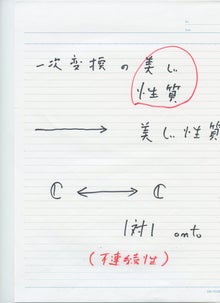
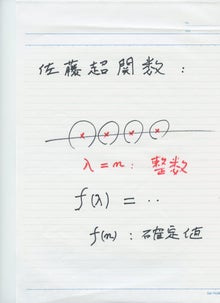
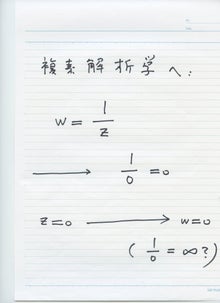

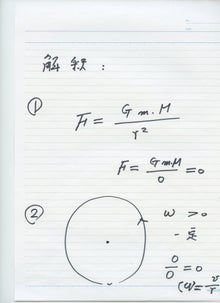

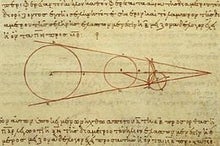


0 件のコメント:
コメントを投稿